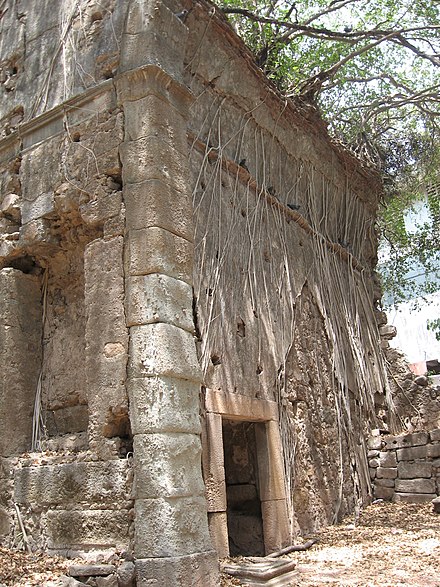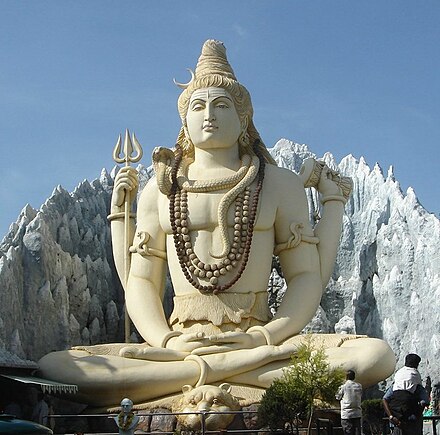
India , oficialmente República de la India ( ISO : Bhārat Gaṇarājya ), es un país del sur de Asia . Es el séptimo país más grande por superficie ; el país más poblado a junio de 2023; y desde el momento de su independencia en 1947, la democracia más poblada del mundo. Limita con el Océano Índico al sur, el Mar Arábigo al suroeste y la Bahía de Bengala al sureste, y comparte fronteras terrestres con Pakistán al oeste; China , Nepal y Bután al norte; y Bangladesh y Myanmar al este. En el océano Índico, la India se encuentra en las proximidades de Sri Lanka y las Maldivas ; sus islas Andamán y Nicobar comparten una frontera marítima con Tailandia , Myanmar e Indonesia . ( Articulo completo... )








.jpg/440px-Shilpa_Shetty_at_the_Wellfest_awards_2018_(19).jpg)

.jpg/440px-Madhavan_Saala_Khadoos_(cropped).jpg)









Cronología de la historia de la India , civilización del valle del Indo , Dholavira , ciencia y tecnología en la antigua India , Meluhha , teoría de la invasión aria , teoría de Fuera de la India , conquistas griegas en la India , historia marítima de la India , Imperio Maurya , Ashoka , Imperio Shunga , Imperio Hoysala , Vijayanagara , dinastía Satavahana , Reino Indogriego , Indoescitas , Reino Indoparto , Imperio Kushan , Sátrapas occidentales , Imperio Gupta , Dinastía Chola , Imperio Pala , Incursiones islámicas en la India , Imperio Mughal , Imperio Maratha , Raj británico , Compañía de las Indias Orientales , Gobernador General , Virrey , Guerra de Independencia, 1857 , Movimiento de Independencia de la India , Ejército Nacional Indio , Azad Hind , Movimiento Salir de la India , Partición de la India , Historia de la República de la India , Movimiento de Países No Alineados , Guerra Sino-India , Indo- Guerra de Pakistán de 1947-1948 , Guerra Indo-Pakistaní de 1965 , Guerra Indo-Pakistaní de 1971 , Guerra de Kargil , Enfrentamiento entre India y Pakistán de 2001-2002 , Militar , Demográfico
Ley , ley hindú , Constitución , partidos políticos ( Congreso Nacional Indio , Partido Bharatiya Janata ), Relaciones exteriores , Elecciones , Divisiones políticas , Reserva en la India
Agencias gubernamentales , Poder legislativo ( Lok Sabha , Rajya Sabha ) Poder ejecutivo ( Presidente y Vicepresidente , Primer Ministro y Viceprimer Ministro , Ministros del Gabinete , Secretario del Gabinete , Comisión Electoral , Ministro de Relaciones Exteriores ; Aplicación de la ley : CBI , CID , Inteligencia : IB , RAW ), Dirección General de Investigación del Impuesto sobre la Renta Poder Judicial ( Corte Suprema ), Fuerzas Armadas ( Ejército , Armada , Fuerza Aérea , Fuerza de Seguridad Fronteriza , Guardia Costera )
Himalaya , Ghats occidentales , Ghats orientales , llanura Indogangética , meseta del Deccan , desierto de Thar , Ganges , Rann de Kutch , río Brahmaputra , noreste de la India ; Montañas , Valles , Islas , Ríos ; Estados y territorios de unión , Ciudades , Distritos , Regiones , Fauna , Flora
Rupia , Bolsa de Valores de Bombay , Bolsa Nacional de Valores , Nivel de vida , Empresas , Banco de la Reserva de la India , Política energética ( solar , eólica , nuclear ), Turismo , Transporte ( Autopistas , Transporte ferroviario , Auto rickshaw ),
Idiomas , Nivel de vida , Religión
Música ( carnática , indostánica , indi-pop ), danza , idiomas , literatura , arquitectura , cine y televisión , cocina , vacaciones , folclore , educación , medios de comunicación , artes marciales indias
Consejo Indio de Investigación Agrícola (ICAR), Instituto Indio de Astrofísica , Centro Nacional de Tecnología de Software , AIIMS , IISc , IIT , NIT , BITS-Pilani , INRegistry , sistema de numeración indio , Organización de Investigación Espacial de la India , Intercambio Nacional de Internet de la India , ICRISAT , Instituto Internacional de Tecnología de la Información, Hyderabad
Inglés indio , Ley de nacionalidad india , Sistema de numeración , Organización de investigación espacial de la India , Telecomunicaciones , Proyecto de desarrollo de carreteras nacionales , Bandera , Placas de matrícula de vehículos , Nacionalismo indio , Métrica en la India
Religiones en la India
Subcontinente indio
Otros paises
Los siguientes proyectos hermanos de la Fundación Wikimedia brindan más información sobre este tema: